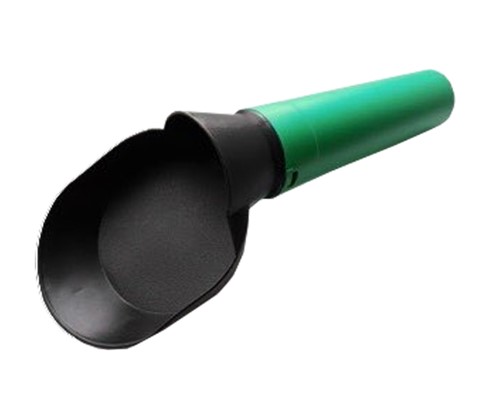Textured vegetable proteins - new or classic?
The global development of the plant-based MEAT analogue category has given a new impetus to textured vegetable proteins, making them the main ingredient in innovative food industry trends. In fact, the history of the use of these components in food has more than a dozen years. What textured vegetable proteins are, where and for what purpose they are used - the National Agrarian Agency learned about this from representatives of the Russian food industry.
“Textured vegetable proteins are products created using a special extrusion technology, which, through high temperatures, pressure and moisture, melts vegetable raw materials (soybeans, peas , wheat, rice, etc.) to a homogeneous mass, which is then converted into a specific structural object with given quality characteristics,” explained Artyom Ponomarev, HEAD of the Association of Manufacturers of Alternative Food Products (APAPP).
The topic of vegetable proteins in nutrition has been actively developed in the territory of modern RUSSIA since the early 20s of the twentieth century. At that time, the focus was on soybean culture as "some guarantor of taste and satiety for everyone." In Moscow, there was a soybean research institute that conducted tastings of various soybean dishes, incl. cutlets and meat substitutes. The further development of the agro-industrial complex in the country led not only to the expansion of the range of vegetable proteins, but also to the improvement of the quality of the proposed raw materials and its more competent use in the formulations of traditional meat products.
“In the 90s of the twentieth century, only the functionality of the ingredient was of interest to developers, which made it possible to replace meat raw materials with vegetable raw materials in the recipe and reduce the cost of the final product. No one focused on the protein content and other beneficial properties of plant texturates. In modern conditions, manufacturers are interested both in economic advantages and in the quality parameters of the texturates used, i.e. their multifaceted functionality and nutritional value when recreating the structure and organoleptics of a meat product,” said Alexander Kosarev, Head of the Food Ingredients Department at Partner-M.
Current standards allow the use of vegetable ingredients in meat products, limiting their mass fraction to less than 95% of the composition. Substitutions for vegetable components in the amount of 20% to 80% are practiced in various product groups: from semi-smoked sausages to canned food. According to the official nomenclature, such products are called meat-containing, meat-vegetable or vegetable-meat, however, when sold, they are still presented under the classic “meat” names: sausages, cutlets, dumplings, without any additional marking on the vegetation of the composition.
Today, the attitude of Russian enterprises in the traditional meat processing sector towards herbal ingredients is gradually changing for the better. Their image is being transformed through extensive research on the relationship between HEALTH and nutrition, discoveries and innovative food tech developments. In recent years, the global food community has been talking about the development of hybrid products, the recipe of which combines components of both animal and vegetable origin. However, the idea behind the hybrid trend is radical and innovative. When positioning "hybrids", the emphasis is on the additional benefits that plant components bring to the final product. Increased protein content and a complete amino acid pool due to the combination of several vegetable proteins, additional dietary fiber - a benefit to the human gut microbiome,
Unfortunately, Russian manufacturers are still uncertain about the potential of this trend for the country. Doubts are mainly related to the experience of the food industry of the last century: an ingrained negative attitude towards soy in the composition of a meat product, perceived as a sign of cheapness and poor quality.
“The problem in Russia is the lack of reliable information about vegetable protein ingredients from the scientific community. Work to popularize their use should begin with dispelling myths about the dangers of soy, GMOs and food prejudices in society. Such a task is quite within the power of the media, but still the main initiative should come from the relevant ministries,” said Artyom Ponomarev, head of the Association of Food Producers (APAPP).
And what can be said about the use of vegetable texturates in the alt food direction? As part of an innovative trend, texturates of various shapes, sizes and functionality allow you to create vegetable analogues with literally identical organoleptics of traditional meat products - from cutlets to steaks. “Certainly, the scope of vegetable textured protein is very wide. We use it in the production of a line of products under the brand "non-meat". There are cutlets, and dumplings, and nuggets, and kebabs. In each formulation, the ingredients are applied differently, according to the parameters of the final structure and consistency. By the way, we are talking about both products of medium and high price categories,” commented Kirill Alexandrov, CEOcompany "Kotletar" (a brand of alternative products "non-meat").
“In production, the quality of the ingredients used is important. The level of purity of the texturate provides a neutral flavor and, accordingly, allows you to minimize the work with foreign flavors. In turn, the shape, size and hydration parameters of the ingredient allow you to recreate the desired meat juiciness, bite and chewiness,” said Maxim Mikhailov, CEO of GreenBro (a brand of alternative products Dr.Grün).
Local demand for vegetable texturates for use in the food industry is starting to grow, although the segment itself can still be characterized as small. Due to the imposed sanctions restrictions, the market is facing problems in the supply of imported ingredients, rising prices for raw materials and limited technical capabilities of the Russian agro-industrial complex. “Most of the vegetable protein ingredients offered in Russia are imported, so our country has a great potential for building enterprises for the processing and production of vegetable protein isolates, concentrates and texturates for the food industry,” commented Marina Roylyan, DIRECTOR of development of the brand of alternative products “NE MEAT", Tashir Food. Interestingly, the opinion of suppliers of food ingredients is radically different, now vegetable texturates are considered unattractive in terms of volume and unprofitable direction of import, especially considering the exchange rate. Speaking about the development of local production, representatives of Partner-M, the main player in the local market for the processing and production of vegetable protein ingredients, explained that the entry of new players into this segment of the agro-industrial complex is associated with many complicating factors, high costs and complex schemes come to the fore supply of imported equipment, as well as a shortage of skilled labor.
According to experts, to what extent the Russian market is provided with vegetable texturates, and how it will develop further, it will become clear by the beginning of 2024. In the meantime, the National Agrarian Agency is convinced that texturized vegetable protein has been known to players in the food industry for more than 100 years and is used in various food products, performing a wide range of tasks. And in connection with innovative discoveries and achievements of foodtech and altfood, the potential of this ingredient is growing every day. Manufacturers do not stop there, and the market will gradually be filled with more and more creative, healthy and tasty products with plant textures in their composition.
Read together with it:
- Modernization of poultry farming in the Nizhny Novgorod region: new opportunities and production growthThe project, implemented under the regional preferential lending program, allowed the Russkoye Pole agricultural holding to invest 440 million rubles. Regional Agriculture Minister Nikolai Denisov reported that the organized sector produced 88,400 tons of poultry MEAT in 2024 , with an expected increase to 93,8......
- Proper insemination of cows: how genetic and physiological factors influence herd productivityGenetics plays a significant role in determining the reproductive fitness of bulls, and daughter pregnancy rates should be compared to accepted standards. If a farm's performance falls short of the baseline, using less-than-optimal bulls can still improve fertility. Cow physiology is also crucial for successful insemination. Feed quality, housing conditions, and veterinary care directly impact res...
- The EU imposed sanctions against Medvedev's aide and the HSE rector.The sanctions include AvtoVAZ CEO Maxim Sokolov, Medvedev aide Oleg Osipov, HSE Rector Nikita Anisimov, three children's ombudsmen, a North Korean general, and others. In total, the EU has added 21 individuals to the sanctions list .As part of its latest sanctions package, the European Union imposed restrictive measures against individuals, including AvtoVAZ CEO Maxim Sokolov, Assistant to Deputy ...
- Jobs, Musk, Bezos: How Business Gurus Make Meetings Less ExhaustingSteve Jobs once refused to attend a meeting with the US President because the attendee list was too long. Anna Yoshitsugu, Senior Strategy and Development Manager at Uber, explains how business gurus prevent meetings from "stealing" their time.Let's say you hold one meeting each week, it lasts two hours, and there are ten people in attendance, each with an average salary of 1......
- Recognition of merit and dedication. State awards were presented in Minsk to representatives of various fields.October 22, MINSK . Belarusian Prime Minister Alexander Turchin, on behalf of the President, presented state awards to workers in various fields, BELTA reports. "The best representatives of our country's workforce have gathered in this hall," Turchin noted. "Among those receiving awards are representatives of tax authorities, industry, forestry, agriculture, construction, culture, sports, and civi...
- Belarusian goods account for 94% of Russian dairy imports.October 16, MINSK . Belarusian goods account for 94% of Russia's dairy imports, said Lyudmila Manitskaya, DIRECTOR of the Dairy Union of RUSSIA, at the plenary session of the 11th International Forum "Dairy Belarus," BelTA reports. "For such types of products as whey, permeate,"Curd and curd products—1......
- Small agricultural producers in the Krasnoyarsk Territory will receive partial compensation for their equipment and machinery costs.The per-recipient limit is 20 million rubles. The regional Ministry of Agriculture is accepting applications for the subsidy until October 24th . Individual entrepreneurs, peasant farms, and agricultural consumer cooperatives that purchased machinery and equipment between June 2024 and May of this year are eligible for state support. The list includes all major types of equipment—grain and forage ...
- Tomsk farmers visited a breeding center in the Moscow region.A delegation from the Tomsk Region, led by Deputy Governor Mikhail Ratner, visited the breeding center of JSC Moskovskoye. The company specializes in breeding pedigree cattle and has a wide selection of stud bulls. The company's catalog includes several hundred bulls of dairy and beef breeds, including Holstein, Angler, Jersey, Simmental, Hereford, Aberdeen Angus, and others. According to the comp...
- Urban development is their specialty. What is one of the largest municipal enterprises in the Grodno region working on today?Topic newsWhat is one of the largest municipal enterprises in the Grodno region working on today and how is it doing so? The Shchuchin Regional Unitary Enterprise Housing and Utilities (RUE) employs 528 people. That sounds like a lot. On the other hand, the list of issues these specialists address is very long. The company provides a wide range of services to the public. It includes departments fo...
- A large livestock complex has opened in Parokhonsky, Pinsk District.October 9, Brest. A large livestock complex opened on October 9 on the territory of Parokhonskoye JSC in the Pinsk District , BelTA reports. Construction in the village of Kamen began in November 2024. Workers completed the project this September. The farm used its own funds and also secured a loan. Parokhonskoye is focusing on MILK and MEAT production. Facilities are being reconstructed to increa...






























































